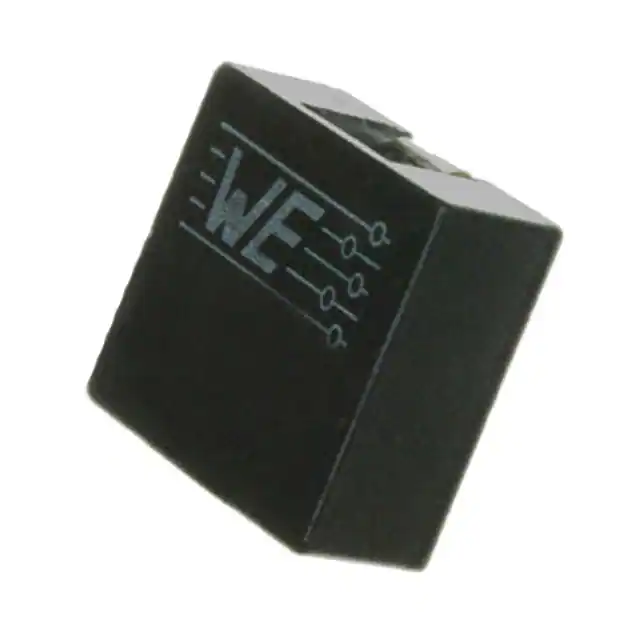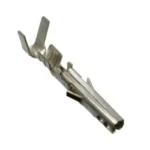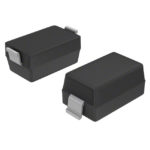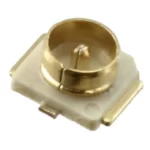Understanding Inductors: A Simplified Explanation
Inductors, also known as coils or chokes, are essential components used in circuit designs for applications such as power supplies and communications. They are used to store energy and control current, and are highly versatile and reliable. Although they are relatively simple components, understanding how they work and how to use them appropriately can be tricky. In this article, I will explain what inductors are, how they work, their different types, choosing the right inductor, their applications, advantages, and disadvantages, and troubleshooting tips.

SECTION 1: Introduction to Inductors
An inductor is an electrical component that stores energy in the form of a magnetic field. They are made up of a coil of wire wrapped around a core, usually made of iron, and are generally used to control the flow of current in a circuit. Although they are simple components, they are incredibly important and have a wide range of applications.
Inductors have been around for many years, and have been used in various applications such as radio communication, power supplies, and motor drives. They are used to filter out unwanted noise, to store energy, and to regulate the flow of current.
SECTION 2: What are Inductors?
Inductors are components that store energy in the form of a magnetic field. They are composed of a coil of wire wrapped around a core, usually made of iron, and are generally used to control the flow of current in a circuit.
The core is usually made of a material that is a good conductor of magnetic fields. The core helps to focus and concentrate the magnetic field, allowing it to store more energy. The coil of wire is responsible for generating the magnetic field and for storing the energy.
When current flows through the inductor, it induces a magnetic field which stores energy. This energy can then be used to regulate the flow of current in a circuit.
SECTION 3: How do Inductors Work?
Inductors work by storing energy in the form of a magnetic field. When a current flows through the inductor, it induces a magnetic field which stores energy. This energy can then be used to regulate the flow of current in a circuit.
When the current is increased, the magnetic field increases and the inductor stores more energy. Conversely, when the current is decreased, the magnetic field decreases and the inductor releases the stored energy. This allows the inductor to regulate the flow of current in a circuit.
In addition, inductors can also be used to filter out unwanted noise. The inductor acts like a filter, only allowing certain frequencies of noise to pass through while blocking out the rest. This is especially useful in radio communication and other applications where noise can be a problem.
SECTION 4: Different Types of Inductors
There are many different types of inductors available, each with their own characteristics and applications. The most common types are air core, ferrite core, iron core, and toroidal core.
Air core inductors are the simplest and cheapest type of inductor. They are made up of a coil of wire with no core, and are used primarily for radio communication.
Ferrite core inductors are slightly more complex, and are made up of a coil of wire wrapped around a ferrite core. They are used primarily in power supplies and motor drives.
Iron core inductors are the most complex type of inductor. They are made up of a coil of wire wrapped around an iron core, and are used primarily in power supplies and motor drives.
Finally, toroidal core inductors are the most advanced type of inductor. They are made up of a coil of wire wrapped around a toroidal core, and are used primarily in power supplies and motor drives.
SECTION 5: How to Choose the Right Inductor
When choosing the right inductor, it is important to consider the application, the type of inductor, and the specifications of the inductor.
The application should be the first consideration when choosing an inductor. Different types of inductors are better suited for different applications. For example, air core inductors are primarily used for radio communication, while iron core inductors are better suited for power supplies and motor drives.
The type of inductor is also an important consideration when choosing an inductor. Different types of inductors have different characteristics, and it is important to choose the right type for the application.
Finally, it is important to consider the specifications of the inductor. Different inductors have different specifications, such as resistance, inductance, and current rating. It is important to choose an inductor that meets the requirements of the application.
SECTION 6: Applications of Inductors
Inductors are used in a wide range of applications, from radio communication to power supplies and motor drives.
In radio communication, inductors are used to filter out unwanted noise, allowing only the desired frequencies to be transmitted.
In power supplies, inductors are used to store energy and regulate the flow of current. They can also be used to filter out unwanted noise.
In motor drives, inductors are used to store energy and regulate the flow of current. They are also used to filter out unwanted noise and to reduce power losses.
SECTION 7: Advantages and Disadvantages of Inductors
Inductors have many advantages, such as their ability to store energy and regulate the flow of current. They are also highly reliable and have a wide range of applications. However, they also have some disadvantages.
One of the main advantages of inductors is their ability to store energy. This allows them to regulate the flow of current in a circuit and to filter out unwanted noise.
Another advantage of inductors is their reliability. They are highly reliable and can operate for long periods of time without needing to be replaced.
On the other hand, one of the main disadvantages of inductors is their cost. Inductors can be expensive, and their cost can add up over time.
Finally, inductors can also be difficult to troubleshoot. They can be sensitive to temperature and other environmental factors, making it difficult to diagnose problems.
SECTION 8: Troubleshooting Inductors
Troubleshooting inductors can be tricky, as they are sensitive to temperature and other environmental factors. The first step in troubleshooting an inductor is to check the specifications of the inductor. Make sure that the inductor meets the requirements of the application.
If the specifications are correct, the next step is to check the environment in which the inductor is being used. Make sure that the temperature and other environmental factors are within acceptable ranges.
The next step is to check the connections to the inductor. Make sure that all connections are secure and that there are no loose or damaged wires.
Finally, if all else fails, the inductor may need to be replaced. If the inductor is still not working correctly after all of these steps, it may be time to replace it with a new one.
SECTION 9: Common Inductor Measurements
When measuring inductors, there are a few key measurements that are important to understand. The first is the inductance, which is measured in Henries (H). The inductance is a measure of the amount of energy that the inductor can store.
The second measurement is the current rating, which is measured in Amperes (A). The current rating is a measure of how much current the inductor can handle before it overheats.
The third measurement is the resistance, which is measured in Ohms (Ω). The resistance is a measure of the amount of resistance to the flow of current that the inductor has.
Finally, the fourth measurement is the frequency, which is measured in Hertz (Hz). The frequency is a measure of how quickly the inductor can respond to changes in the current.
SECTION 10: Conclusion
Inductors are essential components used in circuit designs for applications such as power supplies and communications. They are used to store energy and control current, and are highly versatile and reliable. Although they are relatively simple components, understanding how they work and how to use them appropriately can be tricky. In this article, I have explained what inductors are, how they work, different types of inductors, how to choose the right inductor, their applications, advantages, and disadvantages, and troubleshooting tips. With this knowledge, you should be able to understand and use inductors more effectively in your circuit designs.


